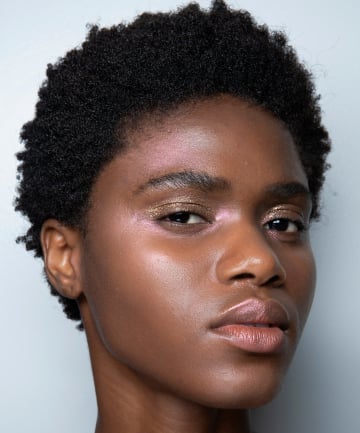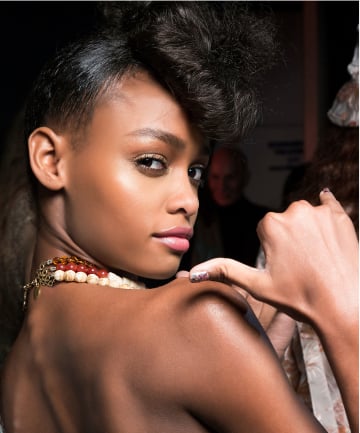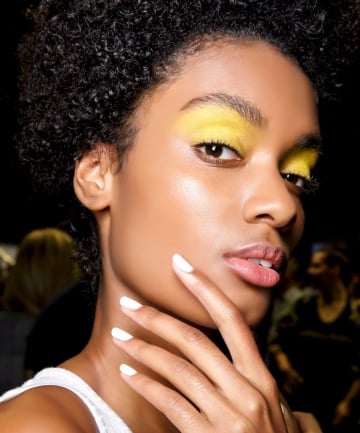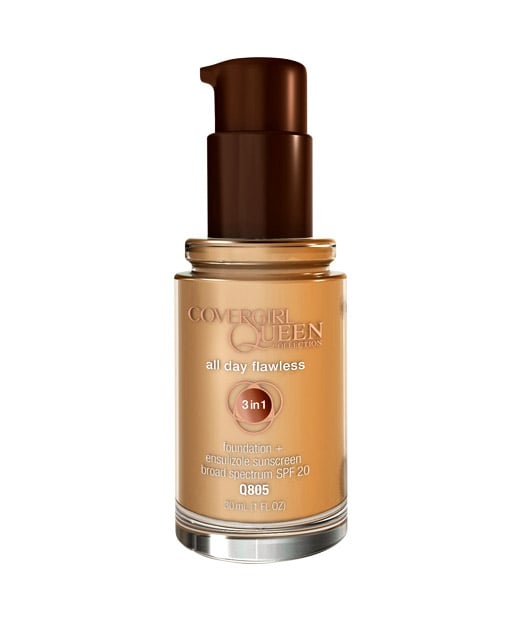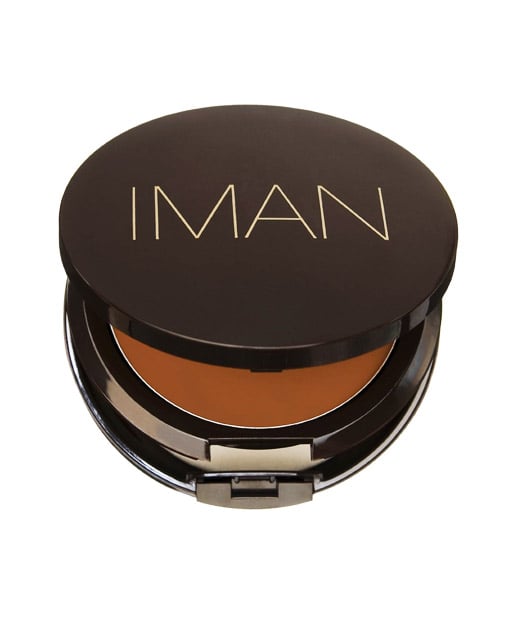Cosmetics makers design foundations based on two completely different color palettes — the traditional artists' palette, which is set up with a pure white canvas in mind, and a cosmetic palette, which uses the fleshy tone of real skin as its canvas. Imagine painting the same exact color on each of those canvases — the difference may be subtle on paper, but when the canvas is your skin, it's more than just a little noticeable.
To make things more complicated, on the artists' palette, yellow is always "cool," red is always "warm," and blue can be "neutral," "warm" or "cool". The cosmetic wheel classifies yellow as "warm," blue as "cool," and red can be either "neutral, "warm" or "cool." Lines like MAC and Max Factor use conventional artist's palettes, meaning a "Warm Beige" on their swatches have a pinkish tint, while the same "Warm Beige" in Clinique speak, which is based on a cosmetic palette, would have a yellow tint. To avoid looking radiant in one line to completely pallid in other, it all boils down to knowing how shades are categorized, then embarking on a process of elimination.
"Most lines have foundations in certain tone 'families' — Iman, Black Opal, Lancome, MAC," says Mills. Take MAC, for example. Instead of "Deep Honey," you'll see tones named NW46 or NW22. The capital letters represent members of a color family.
• C is for Cool (yellow-golden olive skin)
• NC is for Neutral Cool (golden beige skin)
• N is for Neutral (beige skin)
• NW is for Neutral Warm (pink beige skin)
• W is for Warm (pinkish skin)
Next up is the number, which is tied to lightness and deepness rather than undertone, and for many lines that also classify in this system, the higher the number, the deeper the color.
Now, what do we do with this information? "You need to determine what your undertone is first — then it gets easier," says Mills.
Image via Imaxtree
To make things more complicated, on the artists' palette, yellow is always "cool," red is always "warm," and blue can be "neutral," "warm" or "cool". The cosmetic wheel classifies yellow as "warm," blue as "cool," and red can be either "neutral, "warm" or "cool." Lines like MAC and Max Factor use conventional artist's palettes, meaning a "Warm Beige" on their swatches have a pinkish tint, while the same "Warm Beige" in Clinique speak, which is based on a cosmetic palette, would have a yellow tint. To avoid looking radiant in one line to completely pallid in other, it all boils down to knowing how shades are categorized, then embarking on a process of elimination.
"Most lines have foundations in certain tone 'families' — Iman, Black Opal, Lancome, MAC," says Mills. Take MAC, for example. Instead of "Deep Honey," you'll see tones named NW46 or NW22. The capital letters represent members of a color family.
• C is for Cool (yellow-golden olive skin)
• NC is for Neutral Cool (golden beige skin)
• N is for Neutral (beige skin)
• NW is for Neutral Warm (pink beige skin)
• W is for Warm (pinkish skin)
Next up is the number, which is tied to lightness and deepness rather than undertone, and for many lines that also classify in this system, the higher the number, the deeper the color.
Now, what do we do with this information? "You need to determine what your undertone is first — then it gets easier," says Mills.
Image via Imaxtree
If you don't already know what your undertone is, it's time to track it down. Start by looking at your wrists — if the veins look blue or purplish, you probably have cool undertones; if the veins look more greenish, you probably have warm undertones; if you see both, chances are you're neutral.
Still confused? Gargiula agrees it can get overcomplicated, so she offers these helpful hints:
• If you fall into the tan to light brown complexion range, you mostl likely have yellow undertones (like honey)
• If you fall in the medium to deep skin complexion range, you most likely have neutral to warm brown undertones (like coffee with varying degrees of cream)
This info. will help you track down your foundation when shopping online and hovering over swatch descriptions. If you're venturing into a store to sample foundations, forget the wrist test. Click ahead to find out why.
Image via Imaxtree
Still confused? Gargiula agrees it can get overcomplicated, so she offers these helpful hints:
• If you fall into the tan to light brown complexion range, you mostl likely have yellow undertones (like honey)
• If you fall in the medium to deep skin complexion range, you most likely have neutral to warm brown undertones (like coffee with varying degrees of cream)
This info. will help you track down your foundation when shopping online and hovering over swatch descriptions. If you're venturing into a store to sample foundations, forget the wrist test. Click ahead to find out why.
Image via Imaxtree
If you're physically testing out foundations, start with a clean, moisturized face and zero makeup, and test on your jawline. "With African American skin tones, faces are lighter than your body, so don't use your hands or artificial lighting," says Mills. Start by testing three shades: one slightly lighter, one that looks like it matches your skin exactly and one slightly darker than your skin tone. Apply each one in a line from the cheek to the jawline and resist the urge the blend. Wait about five minutes (10-15 minutes is best, if you have the time). This gives the foundation time to warm up and mix with your facial oils to reveal its true color, says Mills. "The one that "disappears" is the one you should go with."
Once you've found your color family and general tone, Mills also offers a few tried and true tips:
• Black skin tends to skew oily, so try mineral bases along with a primer
• When in doubt, look for warmer bronze shades to avoid looking ashy.
Now that you're ready to shop, here are our top picks of lines that have the most range of undertones for dark skin tones.
Image via Imaxtree
Once you've found your color family and general tone, Mills also offers a few tried and true tips:
• Black skin tends to skew oily, so try mineral bases along with a primer
• When in doubt, look for warmer bronze shades to avoid looking ashy.
Now that you're ready to shop, here are our top picks of lines that have the most range of undertones for dark skin tones.
Image via Imaxtree
The brand's Queen Collection was specifically designed with black women in mind, and contains new formulated products for black women and a wider shade range. CoverGirl Queen Collection All Day Flawless Foundation, $9.79, comes in 14 shades — that's 14 different variations between the light-medium shade and the darkest shade, which in many other cosmetic lines is only a mere two or three variances. Plus, this product has SPF 20 to counter hyperpigmentation and is a real multi-tasker, fusing foundation, concealer and powder into one.
IMAN Cosmetics breaks down foundation color into three categories:
Sand: light olive to tan
Clay: medium olive to light brown
Earth: medium brown to deep ebony
"Within these three categories, shades either range from light to deep or are in numerical order," says Giugliano.
The Iman Cream to Powder, $16, and Iman Stick Foundation, $16, both carry the most options, with 14 shades. Once you've used the categorization system to find your perfect match, Iman's website also has a nifty "Meet Your Match" section that suggests Sand, Clay and Earth tones if you wear similar shades in Black Opal, MAC, Revlon, Fashion Fair or Black Up.
Sand: light olive to tan
Clay: medium olive to light brown
Earth: medium brown to deep ebony
"Within these three categories, shades either range from light to deep or are in numerical order," says Giugliano.
The Iman Cream to Powder, $16, and Iman Stick Foundation, $16, both carry the most options, with 14 shades. Once you've used the categorization system to find your perfect match, Iman's website also has a nifty "Meet Your Match" section that suggests Sand, Clay and Earth tones if you wear similar shades in Black Opal, MAC, Revlon, Fashion Fair or Black Up.



